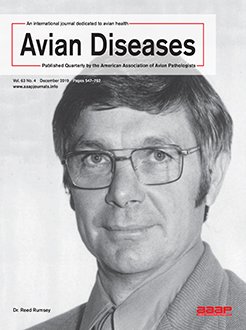This study provides a detailed description of the major morphoanatomic and ultrastructural features of the nasal gland in turkeys. In this avian species, nasal or salt glands are bilateral, pale pink, elongated to spindle-shaped, serous, tubuloalveolar structures, with a mean length ranging from 0.64 ± 0.15 cm in poults of 4 days of age to 2.15 ± 0.17 cm at 22 weeks. Instead of having a supraorbital location as commonly seen in waterfowl and other avian species, these glands run underneath the lacrimal, frontal, and nasal bones in turkeys. The reference point for sample collection for histologic examination is just before the rostral edge of the eyelid. Each gland adheres to the surrounding bone through a thick capsule of dense connective tissue merging with the skull periosteum. Histologically, the salt gland consists of secretory tubuloalveolar structures, lined by cuboidal epithelial cells with a central canaliculus and ducts. There are small and large ducts lined by a bilayered epithelium consisting of large apical columnar secretory cells occasionally admixed with rare cuboidal cells. These cells are periodic acid Schiff negative and slightly Alcian blue positive. Both alveolar and secretory ductal cells contain slightly electrondense granular vesicles, highly folded lateral surfaces, and large numbers of mitochondria, characteristic of ion-transporting epithelia. This study provides valuable information for the accurate identification and localization of the nasal gland during necropsy, as well as its correct histologic interpretation, ultimately improving our understanding of the role of this gland in the pathophysiology of specific diseases in turkeys.
BioOne.org will be down briefly for maintenance on 17 December 2024 between 18:00-22:00 Pacific Time US. We apologize for any inconvenience.
How to translate text using browser tools
27 June 2019
The Nasal Gland in Turkeys (Meleagris gallopavo): Anatomy, Histology, and Ultrastructure
Francielli Cordeiro Zimermann,
Silvia Carnaccini,
Chiara Palmieri,
H. L. Shivaprasad
ACCESS THE FULL ARTICLE

Avian Diseases
Vol. 63 • No. 4
December 2019
Vol. 63 • No. 4
December 2019
electron microscopy
Histochemistry
morphology
necropsy
salt gland




